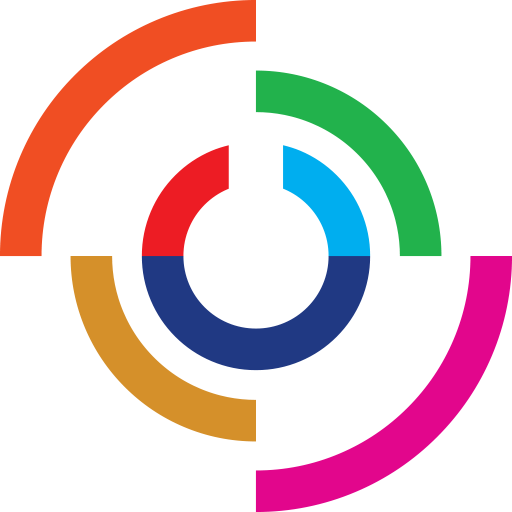Transparency, clarity, and harmonisation are key for the financial journey towards sustainability. These ensure reliableinformation is disclosed to support investors in taking decisions being fully informed and help tackle issues such as greenwashing.
In addition to the existing regulation, financial players can make use of different instruments that can guide them in this journey and signal whether their investments comply with determined sustainability criteria. Labels are one of these instruments.
In 2006 LuxFLAG, the Luxembourg Finance Labelling Agency was launched. This month, we have interviewed Isabelle Delas, LuxFLAG’s newly appointed Chief Executive Officer. We discussed about the role of labels, how LuxFLAG has evolved and how it interacts with the current regulation.
LSFI: In recent years, there has been a significant increase in sustainable financial products, regulations, labels, rating agencies etc. In this context, what is the role of labels and how do they work in general?

Isabelle Delas, LuxFLAG’s CEO
Isabelle Delas: There has been a drastic increase in sustainable finance products over the last years. Regarding investment funds, the overall European net assets for sustainable funds increased over the period of 2018 to 2020 (1). At LuxFLAG, we could also assist to a similar trend: the number of LuxFLAG labelled funds doubled in the last three years growing from 183 to 365 between 2019 and 2021.
Both ESG rating and label providers have probably the same objective: providing simplified choices for investors and ultimately promoting sustainable and responsible investment. They are different in many ways: fund managers take the initiative to apply for a label, whereas rating organisations unilaterally rate funds, irrespective of whether the fund manager asks for the rating.
In addition, the result of a successful label application is a certification of compliance to a given set of criteria. Unlike labels, ESG ratings usually aim to “score” funds’ portfolio on sustainability with a rating.
The purpose of labels consists in reviewing and assessing processes and standards of ESG integration in funds seeking to have the label certification. LuxFLAG‘s activity is, therefore, focusing on reviewing processes according to a set of predefined criteria for each label.
LuxFLAG was launched back in 2006. How has the Luxembourg labelling agency evolved over time and how does the future look like?
LuxFLAG supports the financing of sustainable development by providing clarity for investors through the award of labels. Transparency, indeed, nurtures the trust that is vital to the growth of the sustainable finance sector. In this context, the label plays a fundamental role: it enables transparency and fosters confidence. Although LuxFLAG has evolved over time, its mission remains the same: to support investors in their sustainability journey.
LuxFLAG has been around since 2006 (2) when it started with the microfinance label, dedicated to MIVs. In 2011, LuxFLAG launched the Environment label and after three years introduced the first European ESG label intended for funds incorporating ESG criteria. From then, other three labels have been launched: Climate Finance, Green Bond and LuxFLAG Sustainable Insurance Product (“LSIP”) labels.
As a result of developments in the sustainable finance’s regulatory environment, LuxFLAG has then been evolving as well to meet the need for more transparency in different niches of the financial sector by widening the range of labels offered.
At the end of 2021, LuxFLAG started to expand its team with new recruitments to enable a seamless service. We are a very international diverse team of more than 10 people, coming from more than 8 countries.
Not to forget the LSIW22: three days of Sustainable Finance at Mudam Luxembourg. The 4th edition of LSIW (3) features LuxFLAG’s members, who showcase their commitments and concrete actions in sustainable finance by sharing their insights with the sustainable investment’s community in and outside of Luxembourg.
How are labels adapting to the EU Sustainable Finance regulation such as SFDR, or the Taxonomy? In the case of LuxFLAG, has this imposed any change on the labels offered, the criteria or the assessment process?
Eligibility criteria at LuxFLAG evolved over time together with the regulatory changes. One of our objectives is to accompany investors in their sustainability journey, by adjusting the criteria as the industry evolves. As an example, the Environment and the ESG labels were launched in 2011 and 2014 respectively, well before the SFDR entered into force.
After the entry into force of the SFDR, to align to the EU Sustainable Finance Framework, LuxFLAG has introduced as part of its eligibility criteria a requirement of compliance to article 8 and/or article 9 of the SFDR. Eligibility criteria differ across our labels, especially to distinguish between sustainability transition and impact labels.
As a result, only article 9 products can apply for the LuxFLAG Climate Finance and Microfinance labels, for instance. However, we do not grant the LuxFLAG label to all article 8 and article 9 funds. We review application packages and pose special attention to the ESG processes and policies in place. If the eligibility criteria are met and the application passes our review process (including review by the Eligibility Committee and approval by the Board), then the label is granted. So, article 8 or article 9 of the SFDR is something, the LuxFLAG label is actually something more.
What differentiates LuxFLAG labels from others? Are there complementarities or overlapping aspects?
There are seven labelling agencies in Europe and we are all working towards the same common goal. Furthermore, LuxFLAG is an independent and international agency. This means that we do not only offer labels to funds domiciled in Luxembourg. We label funds that are distributed in more than 70 jurisdictions. Our offer is therefore different from other agencies.
Some agencies also offer one unique label, while LuxFLAG offers at the moment six labels, differentiating between impact and sustainable transition labels, as mentioned above. We believe that for investors it is relevant to distinguish also among different ESG credentials. This is the reason why we offer the climate finance, environment, microfinance, LSIP labels as well.
What is the added value of labels? How can they support the financial sector in the transition?
Our labels are dedicated to investment and insurance products and fall under two main categories: impact and sustainable transition labels. Each of those labels has its own criteria and some similarities, given the nature of the labels as five are dedicated to funds. A LuxFLAG label means that investment and insurance products meet LuxFLAG’s criteria.
In a nutshell, LuxFLAG’s mission on one hand is to accompany applicant funds and associate members in their sustainability journey. This is done mainly through the sustainable transition labels (ESG and LSIP labels) and the associate membership program. On the other hand, LuxFLAG promotes transparency by recognizing the ESG champions in the market and rewarding them through the LuxFLAG impact labels (climate finance, environment, microfinance and green bond labels).
Which type of audience/investor do labels target? Have you experienced any trend or shift in this respect? From your experience, are retail investors aware of such instruments?
LuxFLAG’s labels do not particularly target any audience nor specific investors but it’s a signal especially for the sustainability-minded investors. Probably retail investors will become more and more aware of labels and other transparency enabling mechanisms, especially as the provisions under MIFID II and Insurance Distribution Directive (IDD) delegated acts will apply.
___
Notes:
(1) According to Morningstar, Zeb et ALFI, sustainable investment funds study 2021, net assets for sustainable funds increased disproportionately compared to those of conventional funds by as much as 239% and 198% in Luxembourg and the rest of Europe, respectively.
(2) LuxFLAG was founded in July 2006 by seven private and public founding partners to support sustainable finance: the Luxembourg government, ALFI, ABBL, ADA, the European Investment Bank, Luxembourg for Finance and the Luxembourg Stock Exchange.
(3) Luxembourg Sustainable Investment Week





